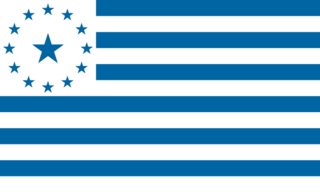Related Research Articles

The Seventeenth Amendment to the United States Constitution established the direct election of United States senators in each state. The amendment supersedes Article I, Section 3, Clauses 1 and 2 of the Constitution, under which senators were elected by state legislatures. It also alters the procedure for filling vacancies in the Senate, allowing for state legislatures to permit their governors to make temporary appointments until a special election can be held.

Direct democracy or pure democracy is a form of democracy in which the electorate decides on policy initiatives without elected representatives as proxies. This differs from the majority of currently established democracies, which are representative democracies. The theory and practice of direct democracy and participation as its common characteristic was the core of work of many theorists, philosophers, politicians, and social critics, among whom the most important are Jean Jacques Rousseau, John Stuart Mill, and G.D.H. Cole.

The flags of the U.S. states, territories, and the District of Columbia exhibit a variety of regional influences and local histories, as well as different styles and design principles. Modern U.S. state flags date from the turn of the 20th century, when states considered distinctive symbols for the 1893 World's Columbian Exposition in Chicago, Illinois. Most U.S. state flags were designed and adopted between 1893 and World War I.

The Territory of Wyoming was an organized incorporated territory of the United States that existed from July 25, 1868, until July 10, 1890, when it was admitted to the Union as the State of Wyoming. Cheyenne was the territorial capital. The boundaries of the Wyoming Territory were identical to those of the modern State of Wyoming.

The State of Deseret was a proposed state of the United States, proposed in 1849 by settlers from the Church of Jesus Christ of Latter-day Saints in Salt Lake City. The provisional state existed for slightly over two years and was never recognized by the United States government. The name derives from the word for "honeybee" in the Book of Mormon.

The territory of the United States and its overseas possessions has evolved over time, from the colonial era to the present day. It includes formally organized territories, proposed and failed states, unrecognized breakaway states, international and interstate purchases, cessions, and land grants, and historical military departments and administrative districts. The last section lists informal regions from American vernacular geography known by popular nicknames and linked by geographical, cultural, or economic similarities, some of which are still in use today.
U.S. states, districts, and territories have representative symbols that are recognized by their state legislatures, territorial legislatures, or tradition. Some, such as flags, seals, and birds have been created or chosen by all U.S. polities, while others, such as state crustaceans, state mushrooms, and state toys have been chosen by only a few.
Fair debt collection broadly refers to regulation of the United States debt collection industry at both the federal and state level. At the Federal level, it is primarily governed by the Fair Debt Collection Practices Act (FDCPA). In addition, many U.S. states also have debt collection laws that regulate the credit and collection industry and give consumer debtors protection from abusive and deceptive practices. Many state laws track the language of the FDCPA, so that they are sometimes referred to as mini-FDCPAs.
In the United States, term limits, also referred to as rotation in office, restrict the number of terms of office an officeholder may serve. At the federal level, the 22nd Amendment to the United States Constitution limits the president of the United States to two four-year terms. State government offices in some, but not all, states are term-limited, including executive, legislative, and judicial offices.

The history of concealed carry in the United States is the history of public opinion, policy, and law regarding the practice of carrying concealed firearms, especially handguns.
The following is the planned order of succession for the governorships of the 50 U.S. states, Washington, D.C. and the 5 organized territories of the United States, according to the constitutions of each. Some states make a distinction whether the succeeding individual is acting as governor or becomes governor.

The 2018 United States state legislative elections were held on November 6, 2018 for 87 state legislative chambers in 46 states. Across the fifty states, approximately 56 percent of all upper house seats and 92 percent of all lower house seats were up for election.
References
- ↑ "Die Legislative ist ein Miliz-Parlament - SWI swissinfo.ch" . Retrieved 2016-12-13.
- ↑ "Idaho State Legislature - Idaho's Citizen Legislature". Archived from the original on 2008-05-09. Retrieved 2008-03-24.
- ↑ "Section 11: Citizen Lawmaking | North Dakota Studies". www.ndstudies.gov. Retrieved 2021-02-06.
- ↑ Oregon State Legislature Archived January 10, 2011, at the Wayback Machine
- ↑ Utah Constitution - Article VI, Section 16 - Duration of sessions.
- ↑ Citizen's Guide to the Legislature
- ↑ "The Federalist #62". www.constitution.org. Archived from the original on 2000-04-16.